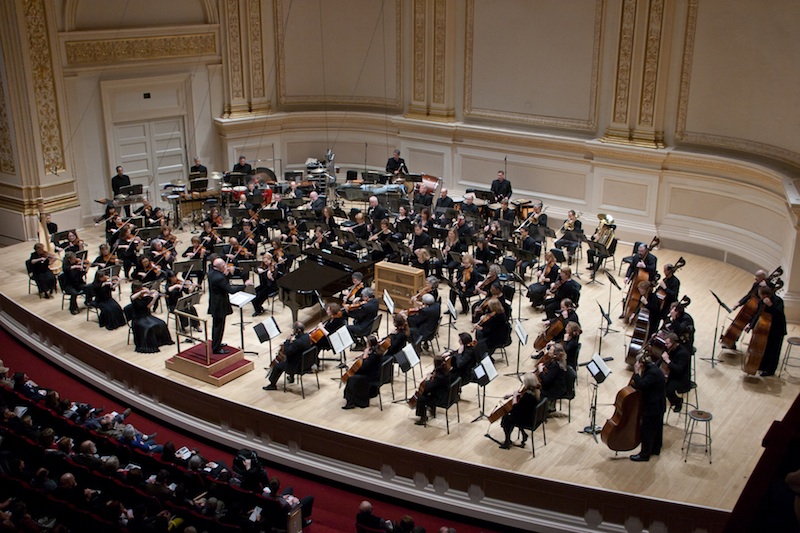One thing you can’t fault the American Symphony Orchestra for is lack of ambitious programming. The two hour long concert that they presented included virtuosic orchestrations of Bach chorales; preludes and fugues by Max Reger, Arnold Schoenberg and Wolfgang Gräser; as well as three fiendishly difficult fugues by Lyonel Feininger, and Schoenberg’s “Variations for Orchestra”, Op. 31.
However, once the concert began, it became clear that the ASO had bit off slightly more than they could chew. In much of the Bach, including O Mensch, Bewein’ dein’ Sünde gross, section entrances were timid and the beginnings and endings of phrases were scraggly and uncoordinated. Leon Botstein’s conducting did little to alleviate the ensemble’s problems; alternately vague and abrupt, his gestures often appeared ill-suited to the sweeping, legato character of the Bach. Intonation problems in the bass and viola sections abounded. There also appeared to be a discrepancy among the string players about the use of vibrato throughout the works by Bach, with some players employing lush, romantic vibrato and other players using none at all. In Bach’s Prelude and Fugue BWV 552, “St. Anne,” the principal cellist played out of tune and appeared to lose his place within the solo.
The concertmaster’s solos, in contrast, were effortlessly brilliant. Her understated style of leadership also deserves recognition. Unlike many concertmasters that overplay and spoil the homogeneity of the orchestral texture in their zeal to lead, she gave an excellent, assertive example for her section to follow while always respecting the character of the music.
Quite strangely, when the ASO played Feininger’s Three Fugues, arguably more demanding both technically and interpretively than any of the Bach, the ensemble suddenly sparkled. Their sound came alive, their intonation improved remarkably and Botstein’s conducting seemed perfectly attuned to the repertoire and the needs of his ensemble. Feininger’s musical architecture was intelligently presented, with sensitive dynamic interplay that allowed each line to be heard clearly. Fugue III- Gigue opened beautifully with a gossamer pizzicato motif and ethereal quality which recalled the Scherzo from Mendelssohn’s Midsummer Night’s Dream.
Schoenberg’s Variations for Orchestra, Op. 31, was similarly spellbinding and well performed. Although it was written during the height of his 12-tone period, the piece is still somewhat lyrical. The program, which seemed designed for the conservatory student with a penchant for atonal or complex music, was daring in its ambitiousness and cleverly-found continuity by utilizing many fugues or fugue-like pieces such as the Variations, which even incorporates the Bach motif (a succession of notes that quotes his name). However, the evening was far too long and dense for most audience members to digest. By the middle of the second half, many eyes appeared glazed-over. “No more Schoenberg, please!”, a lady muttered as she left. Perhaps the American Symphony Orchestra should take pity on their audiences (and musicians!) and intersperse their next concert with some lighter fare.
–Holly Nelson for New York Concert Review; New York, NY

